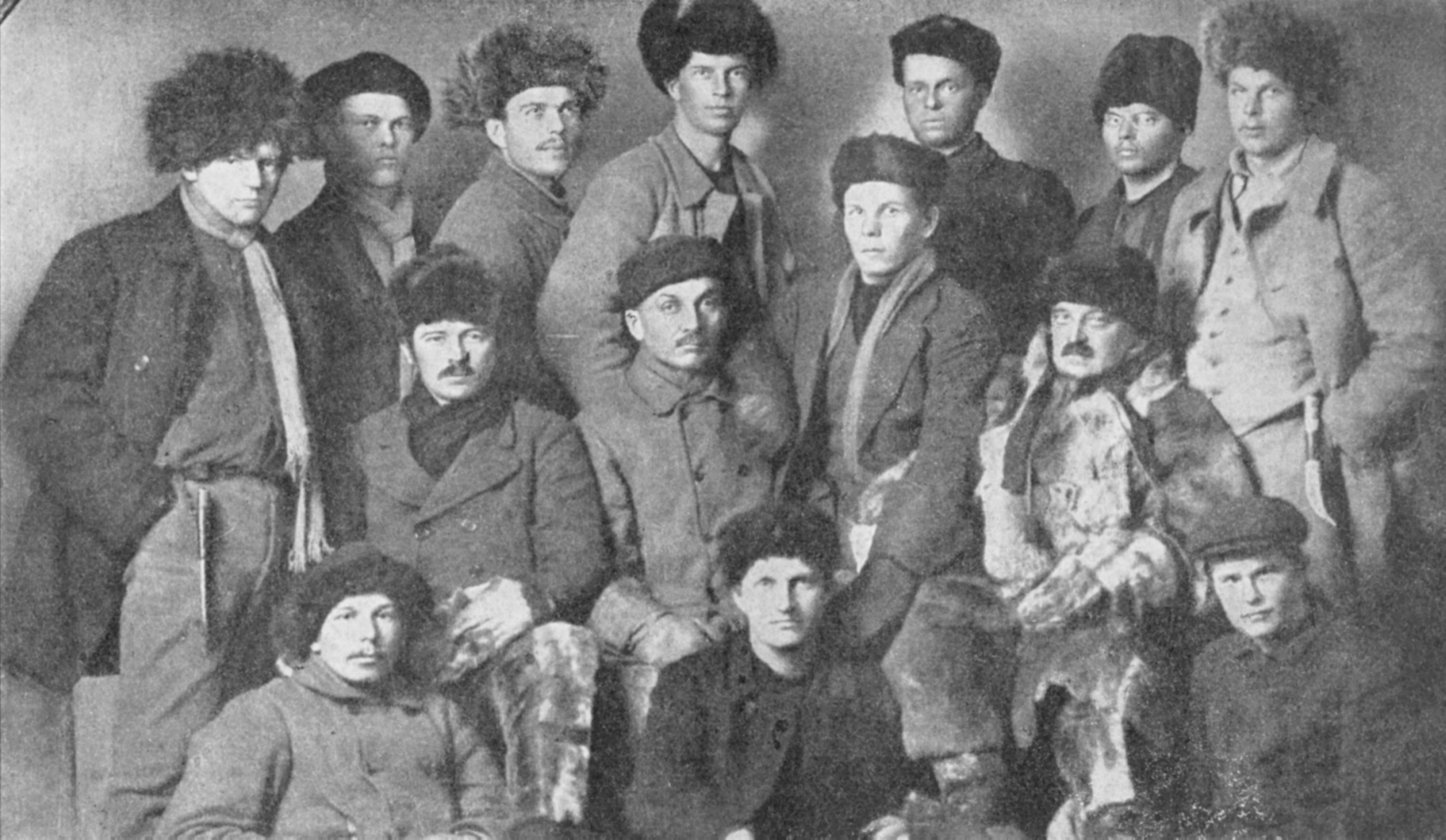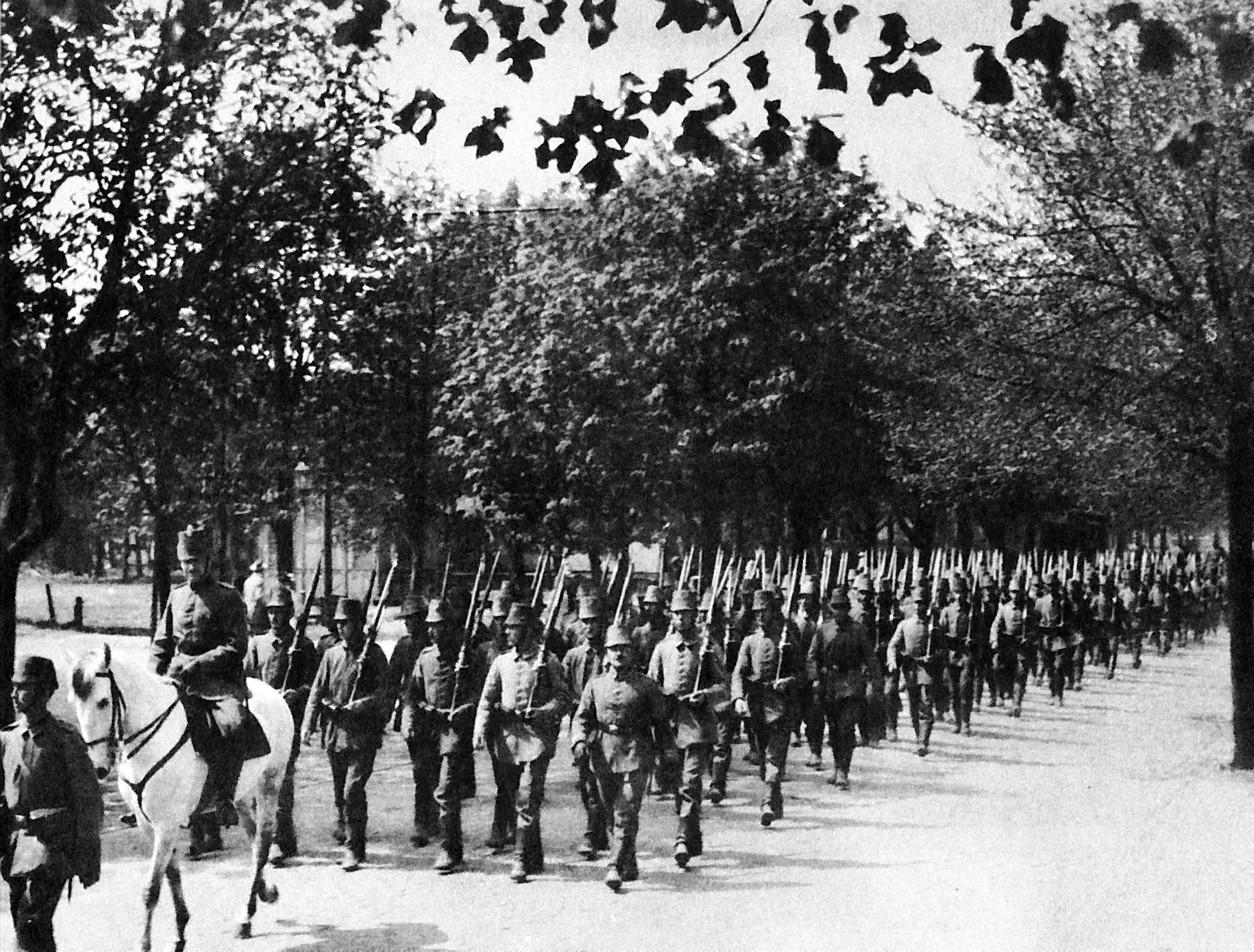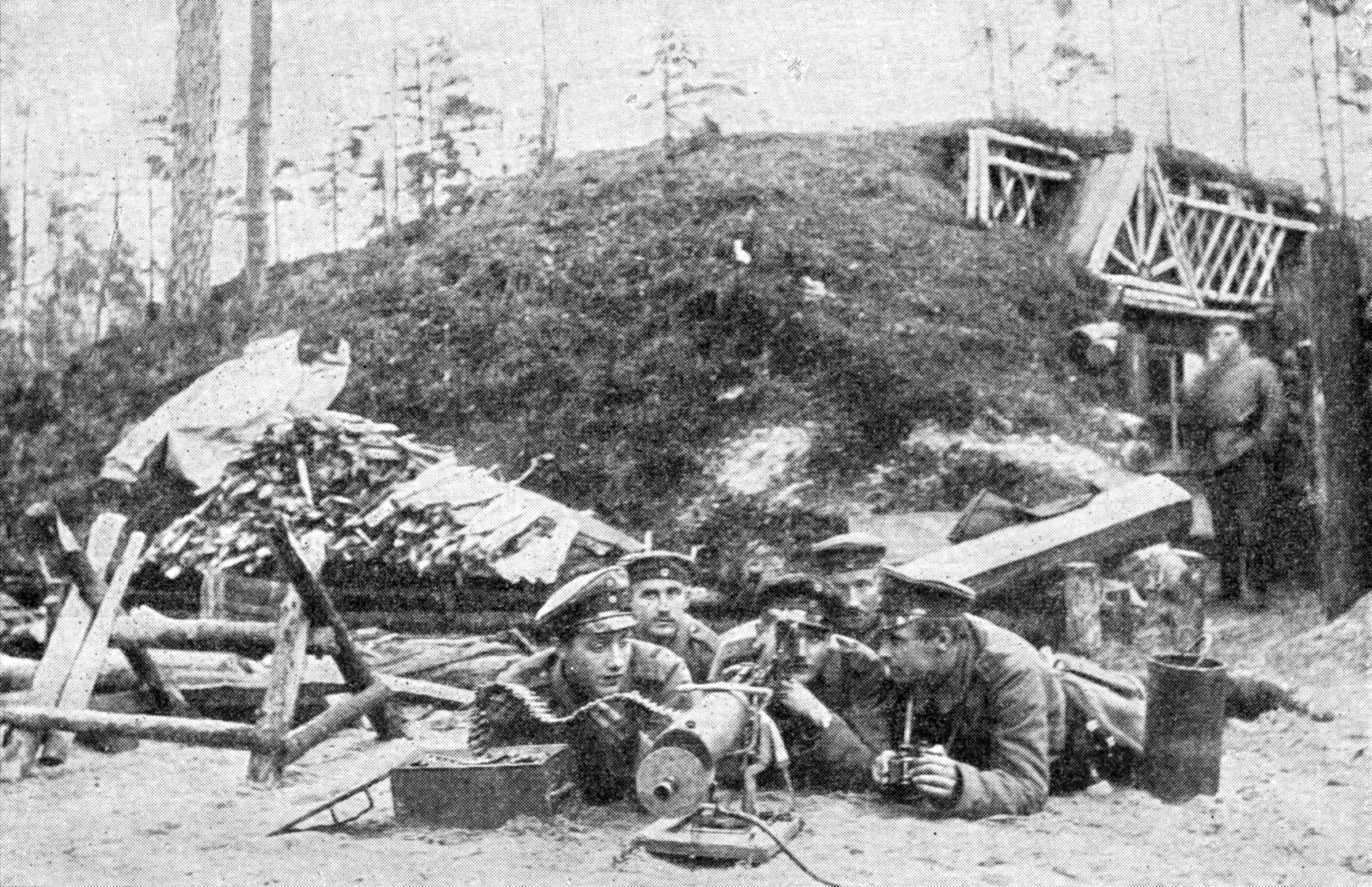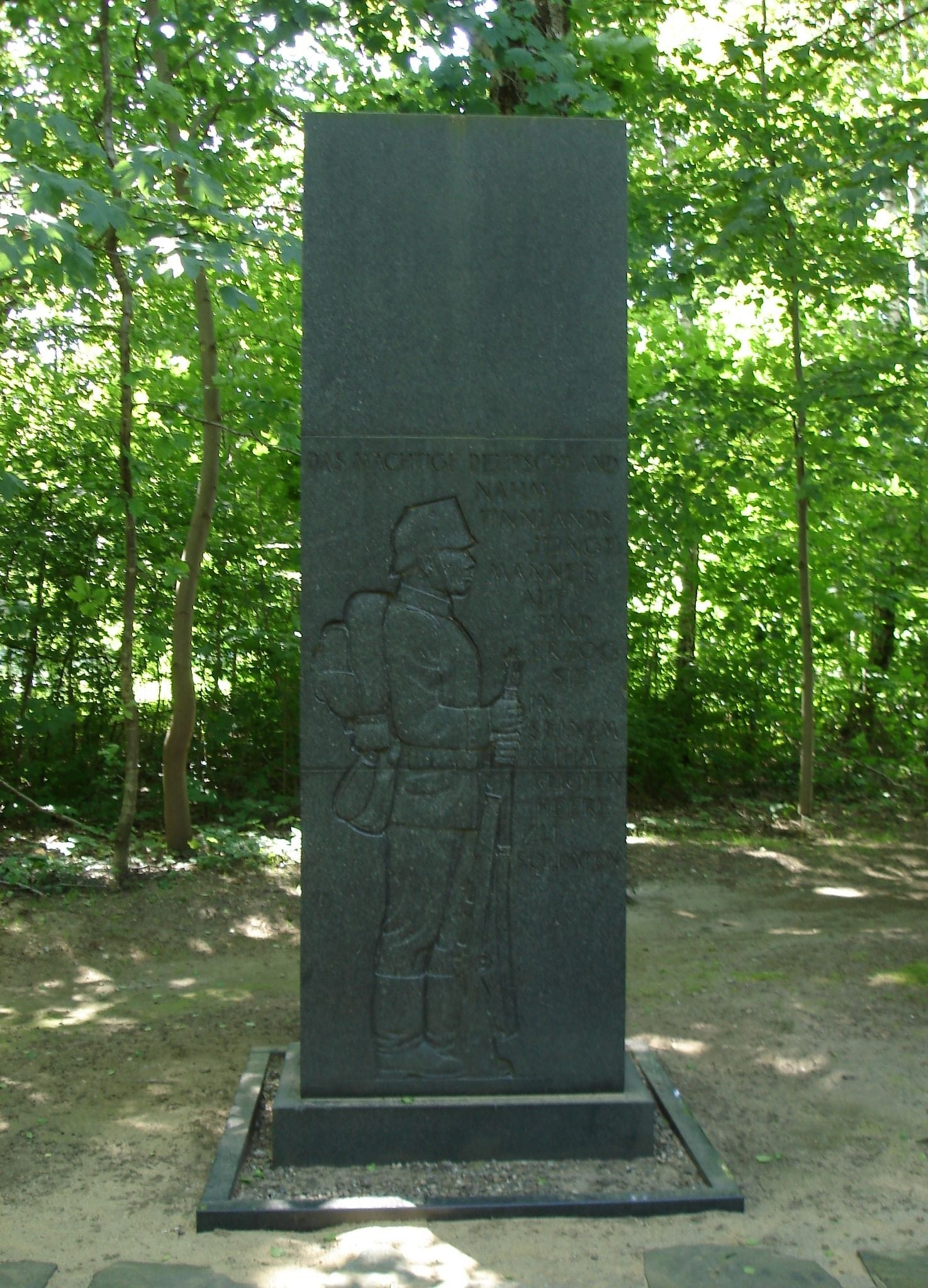The Jäger movement began in late 1914 from University circles in Helsinki with the aim of providing military training for Finns to aid in gaining independence from the Russian Empire. Although Finland had broad autonomy as part of the Empire tensions had been rising since the beginning of the century with tightening Russian control and what was considered oppression by Finns. The birthdate of the movement is usually considered to be 20th of November 1914 after a meeting by nationalist university students and lecturers where it was decided that passive resistance was not enough anymore and treason was the only way forward. Thus a people's army was needed to enable Finland to gain independence.
The Jäger sign
The movement was aligned towards the West and especially towards Germany as was much of the University circles at that time. As military training could not be conducted in Finland the movement started seeking ways to enable for Finns to take train abroad and if possible gain combat experience. Talks were held secretly with both Swedish and German representatives and finally in January 1915 Germany announced that it would train 200 Finns and the recruitment process began. Recruitment was carried out in great secrecy and 200 men moved secretly to Sweden and through Sweden to Lockstedt Lager in Holstein, Germany to participate in what was in the beginning called Pathfinder training to mask the true purpose of the camp. This was further enlarged in the Autumn of 1915 to include roughly 2000 men and recruitment started in earnest. The unit was to be of battalion strength and consist of 4 rifle companies, a machine-gun company and a pioneer company.
Jäger recruiters pose for a group shot sometime in 1915.
This increase in recruitment also changed the demographics of the unit from a mainly university educated force of men who were able to speak German into a truly mixed group with personnel also from the working classes. With the growing number of men in the unit and the lack of German language skills with most new recruits it became obvious that instruction manuals would need to be translated into Finnish. This would result in the formation of the Finnish military lexicon with terms being decided that are still in use today. As a result even today our rank system is mainly German and many of the terms are based on German terms of the time.
Jäger battalion marching in Libau, Latvia during 1917.
At this point the recruitment also became known to the Russian authorities in Finland. The authorities naturally started a crackdown on the movement and many recruiters were captured and jailed. There were also some shootdowns between Jägers and Russians soldiers and policemen coming to arrest them. Some prominent members were also jailed including Aarne Sihvo who would later on become a General and the Command of the Finnish Armed Forces.
Machine-gun training somewhere on the Eastern Front in 1917.
The unit would end their training period in May 1916 and it was designated as the Königlich Preussisches Jägerbataillon Nr. 27 and given the German green Jäger uniforms. As the goal was always also to gain some combat experience to aid in gaining independence the unit transferred to the Eastern Front to fight the Russian army. The battalion spent the years 1916-17 on the front in Latvia around Riga and Libau and took part in the fighting. Casualties were fairly light with only 14 dead and roughly 40 wounded. This was partly due to the fact that the unit only took part in smaller fighting and defensive actions to limit the risk of personnel losses and spare the unit for fighting later on in Finland.
Finnish Jägers somewhere on the frontlines in Latvia.
With the Russian revolution in 1917 and Finland gaining independence on the 6th of December 1917 members of the unit started returning to Finland with the first 60 already arriving already in 1917. They had trained to fight against the Russians, but the situation in Finland quickly started changing with a Civil War breaking out in early 1918. The jägers found themselves fighting against not only the Russian troops still in the country, but also against newly formed Red Guards consisting of mainly workers etc. With most of the Jägers being with a university background or independent landowners and farmers they sided with the Whites that included the government and White Guard. However due to this situation roughly 900 Jägers chose to stay in Germany and only returned to Finland later on.
Jägers on parade in Vaasa during early 1918.
The arrival of the Jägers on the side of the Whites is usually considered to have been a turning point in the Civil War as they provided some much needed professionalism on the side of the whites in a conflict that was mainly fought between amateurs on both sides. In the end the civil war ended in May 1918 after roughly 4 months of fighting. This fighting took a heavy toll on the Jägers as roughly 10 percent of all the Jägers were killed and about 20 percent wounded in the fighting.
In the years following the Civil War and independence many of the Jägers went on to study more in foreign military academies and many would rise into prominent leadership positions both in the Finnish Army displacing the officers trained in Russia and also in the Finnish society as a whole. There were 49 Jägers who reached the rank of a General and most of the command of the Finnish Army during Winter and Continuation wars in 1939-1944 had a background in the Jäger movement and the education received in Germany.
A memorial stone for the Finnish Jägers in Hohenlockstedt in Germany
The movement is still seen in the traditions of the Finnish Army with units being designated as either infantry (Jalkaväki) or Jäger (Jääkäri) with the Jäger units usually being better equipped and often having more specialized training like the mechanized infantry (Panssarijääkäri), airborne (Laskuvarjojääkäri), border guards infantry (Rajajääkäri) etc. Jäger is also being used as the lowest rank of enlisted personnel instead of private in most peacetime infantry units.
The Jäger March composed by Jean Sibelius. It is the honorary march of most Finnish Military units and also the first song to be played at the Independence day reception. Version performed by the Polytechnic Choir from Helsinki University of Technology.







Very interesting. Somehow the finnish involvement in WW2 and their resistance against the Tsar is most often a bit overlooked around here. So thanks for all the informations.
VastaaPoistaWe tend to be a rather small nation and our conflicts were pretty sidelined by all the larger actions going on. Still it's pretty surprising to find out how many people know about our wars.
PoistaGood men, well remembered!
VastaaPoistaThis is a good historical write up and the pictures are a great touch. I had never known any of this so thank you for teaching me.
VastaaPoistaNot many people know anything about the history of my country. We are small and inconsequential in the scheme of things.
Thanks Anne! Small countries really have a tendency to be overshadowed by their larger neighbours. Maybe it's time to stand up and promote your roots :)
PoistaGreat pics and great historical background...
VastaaPoistaFascinating reading Samuli, great work. Finland has always captured the imagination here in NZ as we are a similar sized country and love the David vs Goliath stories!
VastaaPoistaThanks Paul! Funny enough NZ is quite popular here in Finland too. Maybe it's the small countries stick together thing :) Funny enough my little sister is actually now backpacking around NZ and has already been there for a month or so and will be another month still.
PoistaYou've got a pretty impressive history too with the Anzac forces and all the Maori traditions still going on. Nice that they've at least somehow managed to keep them alive and everything hasn't been extinguished by European settlers in the times past. Some great warriors too with Willie Apiata being one of the latest.
Little brother countries of the world unite! :-) If your sister gets stuck for somewhere to stay near Wellington drop me a line. We have a well appointed spare room on the Kapiti Coast, only a few minutes walk from the beach.
Poista